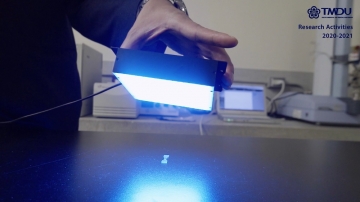
These empirical linkers are broadly classified into: flexible linkers, rigid linkers and cleavable linkers. In addition to the many candidate linkers identified from studies on naturally occurring protein linkers, scientists have also designed empirical linkers with a variety of sequences and confirmations for recombinant fusion protein production. Natural linkers could serve as a general reference for the rational design of empirical linkers in recombinant fusion proteins. Their length, composition, hydrophobicity, and secondary structure together made important contributions towards achieving the desirable functions. Overall, natural linkers primarily adopted extended conformations, and had independent structures that did not interact with the adjacent protein domains. On the other hand, the study by Argos showed that the majority of the linkers adopted coil structures (59%). large linkers were compared, where the majority of linkers adopted coils. The conformations were slightly changed when small vs.

From George and Heringa’s analysis, most linkers on average exhibited α-helix (38.3%) or coil/bend (37.6%) secondary structures (Table 1). Secondary structures of linkers : Natural linkers adopt various secondary structures, such as helical, β-strand, coil/bend and turns, to exert their functions.
#Reversible photolinker pro#
Among them, Pro is a unique amino acid with a cyclic side chain which causes a very restricted conformation. Both studies suggested that Pro, Thr, and Gln were the preferable amino acids for natural linkers. In general, preferable amino acids were polar uncharged or charged residues, which constitute approximately 50% of naturally encoded amino acids. Threonine (Thr), serine (Ser), proline (Pro), glycine (Gly), aspartic acid (Asp), lysine (Lys), glutamine (Gln), asparagine (Asn), and alanine (Ala) were identified as preferable linker constituents by Argos (1), whereas Pro, arginine (Arg), phenylalanine (Phe), Thr, glutamic acid (Glu) and Gln were preferred in the George and Heringa study (2). Values greater than 1 indicate a higher occurrence of a particular amino acid in the linker.
#Reversible photolinker full#

Therefore, the selection or rational design of a linker to join fusion protein domains is an important, yet under-explored, area in recombinant fusion protein technology. Direct fusion of functional domains in the absence of a linker may lead to many undesirable outcomes, including misfolding of the fusion proteins, low yield in protein production, or impaired bioactivity. However, the selection of a suitable linker(s) to join the protein domains together can be complicated and is often neglected in the design of fusion proteins. In most cases, the choice of the component proteins is relatively straightforward as it is based on the desired functions of the fusion protein product. Two indispensable elements are required for the successful construction of a recombinant fusion protein: the component proteins and linkers. More recent applications of the fusion protein technology also include creating novel protein therapeutics and improving the performance of current protein drugs. Three of the most frequent uses of fusion proteins are: as aids in the purification of cloned genes, as reporters of gene expression levels, and as histochemical tags to enable visualization of the location of proteins in a cell, tissue, or organism. By genetically fusing two or more protein domains together, the fusion protein product may obtain many distinct functions derived from each of its component moieties. A fusion protein is a protein consisting of at least two domains that are encoded by separate genes that have been joined so that they are transcribed and translated as a single unit, producing a single polypeptide.


 0 kommentar(er)
0 kommentar(er)
